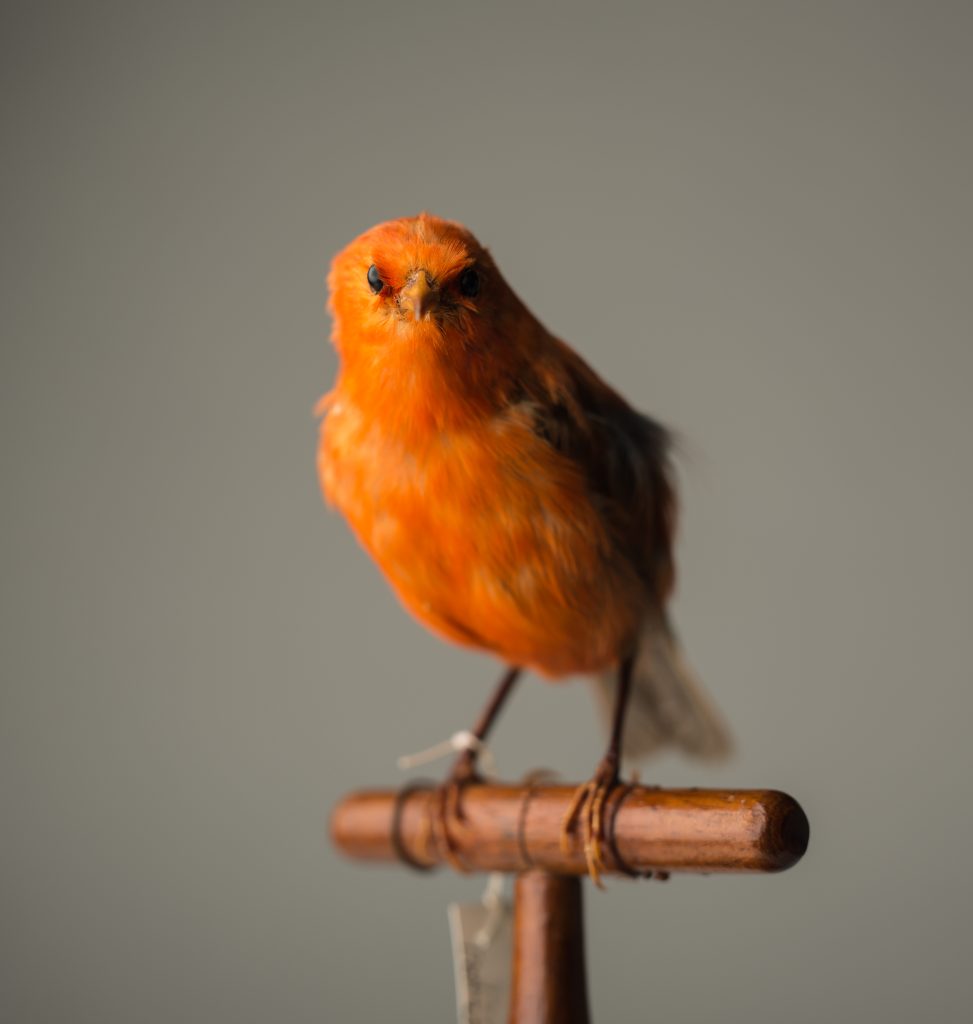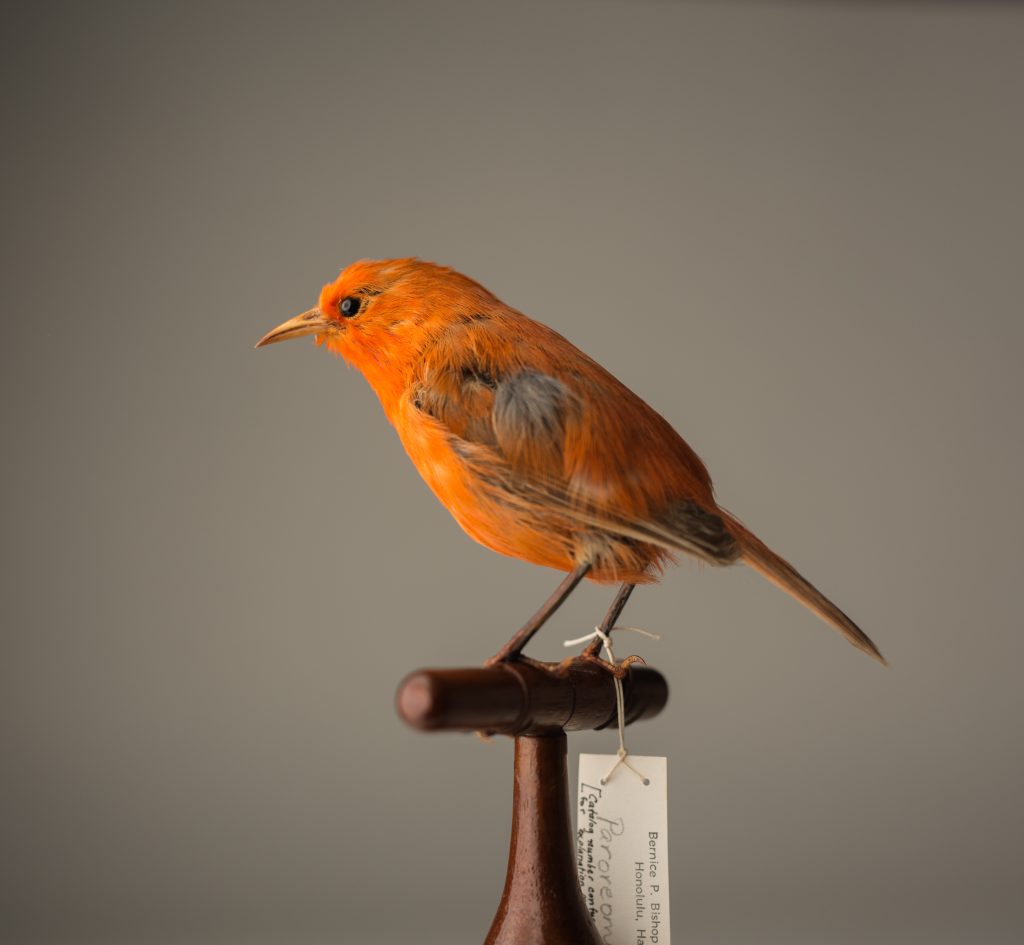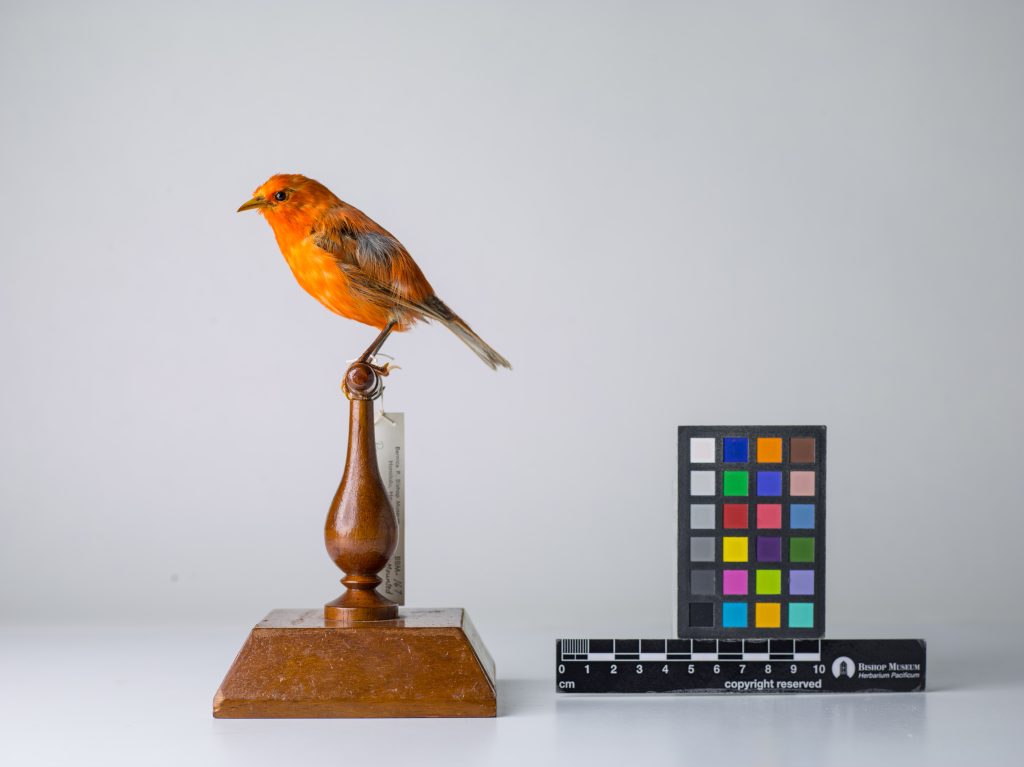Kākāwahie

Names
- ʻŌlelo Hawaiʻi: Kākāwahie
- Common Name: Molokai creeper
- Scientific: Paroreomyza flammea
Song
No available recordings. The most common call is a loud, harsh “chip”, like that of other Paroreomyza. Song unknown.
Conservation Status
Extinct. Last seen in the wild in 1963.
Species Information
The kākāwahie, or Moloka‘i creeper, is a small and insectivorous Hawaiian honeycreeper (Family: Fringillidae) endemic to the forests of eastern Moloka‘i. Males are scarlet red; females are a dull rusty color. Kākāwahie forage in groups, gleaning invertebrates from leaves, bark, and epiphytes in wet ‘ōhi‘a (Metrosideros polymorpha) forests. Little is known about the species’ breeding biology, but it is assumed to be similar to that of the Maui creeper (P. montana). First described in 1889, the last bird was observed less than 100 years later.
Pyle & Pyle 2017 wrote: “The name Kakawahie means firewood, perhaps because of the male’s brilliant flame color (Henshaw 1902a) or because its chip notes resembled the chopping of wood (Wilson and Evans 1899).”
Distribution
Endemic to Molokai
Habitat
Kākāwahie were historically restricted to high elevation forests of East Molokai. Almost all known nests were placed in branch forks, woven mostly of mosses. The kākāwahie was noted as being abundant on Molokai, from sea level to forests high in the mountain ridges (Pyle & Pyle 2017). Was known to occur in wet ‘ōhi‘a (Metrosideros polymorpha) forests from low to high elevations, and other heavily wooded native areas of eastern Moloka‘i.
Threats
Although the exact cause of extinction is uncertain, this species was likely susceptible to the same factors that threaten other native Hawaiian forest birds, including loss and degradation of habitat, predation by introduced mammals, and disease.
Photos
Additional Resources
The text above has been provided by Bishop Museum’s RLP Monographs and Maui student, Eliot Carter.
Eliot Carter is a 10th grader on Maui. Eliot has great interest in Hawaiian birds. Volunteering at Bishop Museum for 5 years has contributed to this interest. Eliot’s passion and efforts have supported the findings related to Hawai’i’s extinct forest birds.
For more information and references visit the DLNR State Wildlife Action Plan factsheets. DOFAWʻs species pages and State Wildlife Action Plan fact sheets are provided for general information and are not meant to be a citable, original source of data. If you are a student, researcher, or writer looking for a citable source, please explore the references below or find other original data sources, rather than citing these webpages. The references below were provided by the authors of the State Wildlife Action Plan fact sheets at the time of drafting:
- Baker PE, Baker H. 2000. Kākāwahie (Paroreomyza flammea) and O‘ahu alauahio (Paroreomyza maculata). In The Birds of North America, No. 503 (Poole A, Gill F, editors.). Philadelphia, (PA): The Academy of Natural Sciences; and Washington DC: The American Ornithologists’ Union.
- IUCN Red List of Threatened Species. 2015. Version 2014.3. Available at: www.iucnredlist.org. (Accessed May 2015).
- Scott JM, Mountainspring S, Ramsey FL, Kepler CB. 1986. Forest bird communities of the Hawaiian islands: their dynamics, ecology and conservation. Lawrence, (KS): Cooper Ornithological Society.
- U.S. Fish and Wildlife Service. 2006. Revised Recovery plan for Hawaiian forest birds. Portland, (OR): U.S. Fish and Wildlife Service.



